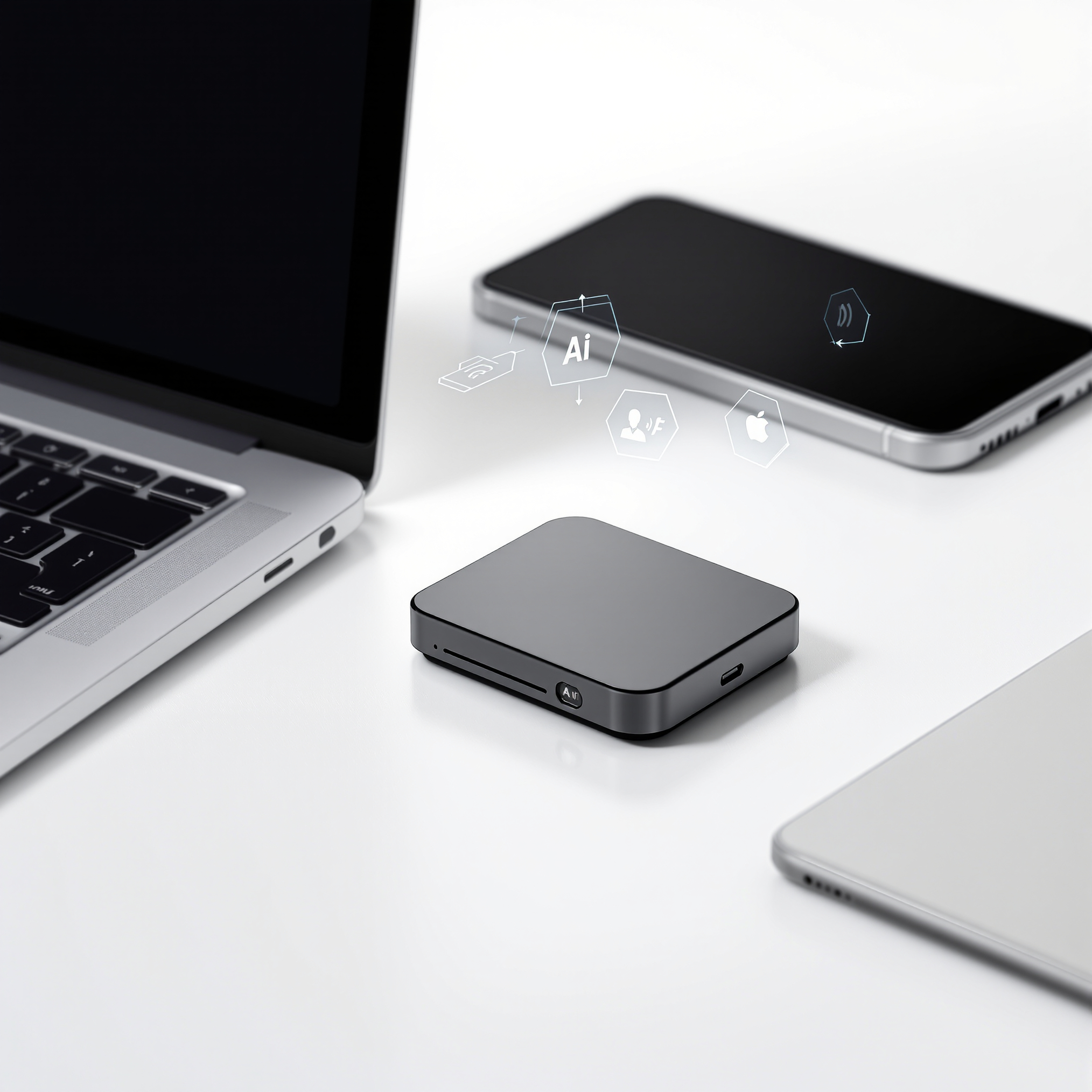OpenAI's new AI Hardware Device: A Screen-Free Interface for Human-Machine Interaction
OpenAI's mysterious AI device promises to rethink how we interact with artificial intelligence—and it's nothing like what you'd expect.
In a recent internal staff call reviewed by The Wall Street Journal, OpenAI CEO Sam Altman and Jony Ive revealed crucial details about their ambitious project. The result? A pocket-sized, contextually aware device that could reshape how we interact with each other by 2026.
The $6.5 Billion Partnership That Changes Everything
OpenAI's acquisition of Ive's AI hardware startup "io" for $6.5 billion signals more than just another tech deal. Altman boldly predicted this partnership could increase OpenAI's value by $1 trillion, positioning it as one of the most significant hardware ventures in recent history.
This isn't just about creating another gadget. Ive described the project as "a new design movement," drawing parallels to his transformative work with Steve Jobs at Apple. The collaboration represents a shift in how we think about AI interaction.
What We Know About the Revolutionary Device
Screen-Free by Design
The most striking feature? No screen whatsoever. This deliberate choice addresses what Ive calls the "unintended consequences" of smartphone addiction. Instead of adding another screen to our lives, the device promises seamless, ambient AI interaction.
Key Specifications Revealed:
- Pocket-sized form factor for ultimate portability
- Contextually aware of user's environment and needs
- Fully conscious of a user's life and surroundings
- Unobtrusive design that doesn't demand constant attention
What It's most likely NOT
Altman was clear about dispelling certain rumors:
- Not glasses or eyewear (despite AR speculation)
- Not a wearable device (Ive criticized products like the Humane AI Pin)
- Not a smartphone (Altman explicitly denied phone development rumors)
Instead, Altman envisions it as a "third core device" that professionals would place on their desk alongside a Premium Laptop and Smartphone.
The Engineering Marvel Behind the Vision
Contextual Intelligence
The device's contextual awareness represents a leap in AI engineering. Unlike current AI assistants that require explicit commands, this device will understand:
- Environmental context (location, time, ambient conditions)
- Professional workflows (meeting schedules, project deadlines)
- Personal preferences (communication styles, work patterns)
- Real-time situations (stress levels, focus requirements)
Timeline and Market Expectations
Altman's ambitious timeline targets late 2026 for the first device launch. Even more boldly, he predicts it will "ship faster than any company has ever shipped 100 million of something new before."
This aggressive timeline suggests:
- Rapid prototyping and iterative development cycles
- Streamlined manufacturing partnerships already in place
- Market readiness for screen-free AI interaction
The "Family of Devices" Strategy
Altman hinted at expanding beyond a single product, envisioning a "family of devices" emerging from this partnership. This suggests:
- Scalable architecture across multiple form factors
- Ecosystem integration for comprehensive AI assistance
- Professional-grade variants for specialized industries
The Competitive Landscape
Why This Matters Now
The timing couldn't be more critical. As AI becomes commoditized, hardware differentiation represents the next competitive frontier. Companies that integrate these devices early will gain significant advantages in:
- Operational efficiency
- Client service quality
- Innovation speed
- Market responsiveness
Strategic Considerations
Organizations should begin preparing for this shift by:
- Evaluating current workflows for AI integration opportunities
- Training teams on voice-first AI interaction
- Developing policies for contextual AI in professional settings
- Planning infrastructure for seamless device integration
What This Means for the Future
Beyond Traditional Computing
Ive and Altman's vision extends far beyond incremental improvements. They're reimagining human-computer interaction entirely, moving from reactive interfaces to proactive, intelligent assistance.
The success of this device could accelerate the adoption of ambient computing across industries. For firms, this means:
- Reduced administrative overhead
- Enhanced creative collaboration
- Improved client satisfaction
- Competitive differentiation

Preparing for the AI Hardware Revolution
Strategic Recommendations
For IT Leaders:
- Begin evaluating infrastructure requirements for contextual AI devices
- Develop security protocols for ambient AI interaction
- Plan integration strategies with existing systems
For Operations Managers:
- Assess workflow optimization opportunities
- Identify high-impact use cases for contextual AI
- Prepare team training programs
For Business Leaders:
- Consider competitive implications of early adoption
- Evaluate ROI potential for AI-enhanced services
- Develop client communication strategies around AI integration
Conclusion: The Dawn of Ambient AI
OpenAI and Jony Ive's collaboration represents more than just another product launch—it's the beginning of a shift in how we interact with artificial intelligence. For professionals, this screen-free, contextually aware device promises to eliminate the friction between human creativity and AI capability.
The 2026 timeline may seem distant, but smart organizations are already preparing for this transformation. The question isn't whether ambient AI will transform professional services—it's whether your organization will be ready to leverage its full potential.
Ready to explore how AI hardware could transform your practice? Contact our team to discuss strategic preparation for the AI revolution.
FAQ
Q: When will the OpenAI-Jony Ive device be available?
A: Sam Altman is targeting late 2026 for the first device launch, with ambitious production goals following shortly after.
Q: How much will the device cost?
A: Pricing hasn't been announced, but given the premium positioning and advanced technology, expect professional-grade pricing initially.
Q: Will it work with existing business systems?
A: While specific integration details haven't been revealed, the contextual awareness suggests broad compatibility with professional workflows.
Q: Is this suitable for privacy-focused work?
A: Security and privacy protocols haven't been detailed yet, but this will be crucial for professional adoption.
Q: How does it differ from current AI assistants?
A: Unlike screen-based assistants requiring explicit commands, this device offers ambient, contextual intelligence that understands your environment and needs proactively.
Social Media Headlines:
- 🚀 OpenAI + Jony Ive = Screen-free AI revolution! Their 2026 device could transform consulting forever. #AIHardware #Innovation
- 💡 No screens, just intelligence. OpenAI's new device promises contextual AI that actually understands your work. #FutureOfWork
- 🔥 $6.5B partnership reveals pocket-sized AI that knows your environment. Game-changer for engineering teams! #AIDevice #TechNews
- ⚡ Jony Ive's next masterpiece: ambient AI that works without screens. Consulting will never be the same. #DesignThinking #AI
- 🎯 2026 target: OpenAI's "third core device" alongside your laptop and phone. Ready for the AI hardware revolution? #BusinessTech
Tag Keywords: AI Hardware, OpenAI Device, Jony Ive Design

